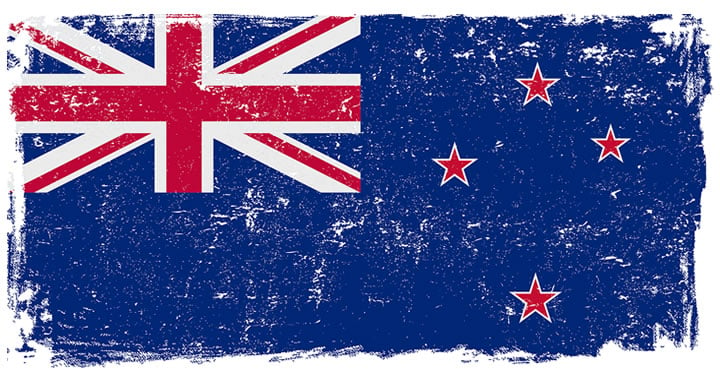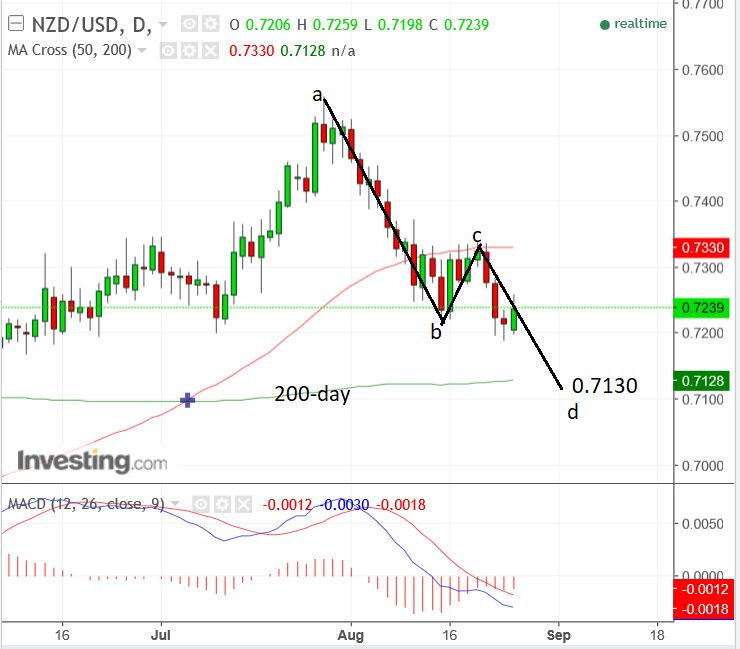New Zealand Dollar: Political Risks Skewed Outlook to Downside

The New Zealand Dollar is at risk of weakening due to political risks say analysts at Credit Suisse.
The currency has long enjoyed the benefit of a stable domestic political scene, while politics have over recent years and months weighed on the currencies of the US, UK and Eurozone at various points.
But with elections due in New Zealand, it could be time for the domestic currency to start absorbing a political risk premium we are told.
With an eye to the general election on September 23, Credit Suisse's Shahab Jalinoos, said that there was a chance the ruling National Party might have to form a coalition to stay in power, making an 'unholy' alliance with the anti-immigration New Zealand First Party.
Immigration has been a strong ingredient in the New Zealand growth dynamic and the prospect of it being managed lower may weigh on the currency.
However, the New Zealand First party is gaining popularity because of the increased pressure migrants place on infrastructure, as well as their tendency to drive up house prices, which have reached unafordably record highs.
"The most impactful policy areas are likely to be in the reform of the RBNZ mandate, and reduced mobility of labor and capital," said Jalinoos.
Recent polls have thrown a new variable into the election mix, however, which is the steadily rising popularity of the Labour leader Jacinda Ardern, who advocates root and branch reform of the Reserve Bank of New Zealand (RBNZ).
Amongst the changes proposed by Labour are for a committee to decide policy rather than just the governor, as is the current arrangement, and for the bank to embrace a second mandate for full employment like the US Federal Reserve.
Clearly this could lead to risks that the RBNZ would keep rates lower than it might otherwise to to supplement growth.
Lower interest rates tend to weigh on a currency as they reduce demand from foreign investors seeking to park their money where they can earn the most interest.
As such a win for Labour could well lead to a weakening of the Kiwi in anticipation of the RBNZ reforms.
The fact markets have remained "sanguine" in relation to political risk, is a further reason to expect some sharp moves.
An analysis of current foreign exchange option pricing provides an insight into how laid back the market is about risks.
Options are low risk leveraged instruments for betting on FX moves.
The trader pays a premium to use the option which is either a 'call' (bullish) or 'put' (bearish) depending on the directionality the trader expects the pair to go in.
If the trader is right the option makes money; if wrong the option expires worthless the trader only having lost the initial premium, as such it is good for controlling downside risk.
Jalinoos remarks that, "only a small amount of excess risk premium is priced in 2m options (which cover the election and subsequent negotiations) over 2w options (which do not)."
This seems to indicate more volatility has yet to be absorbed into the pricing and NZD could whipsaw widely, although most of the election outcomes appear to favour downside for the Kiwi.
From a technical perspective, there are signs in the NZD/USD chart that the currency could be about to embark on another leg down, which supports the bearish political forecasts.
The most compelling of these, is the fact the pair appears to be in the process of forming a relatively clear a-b-c-d pattern down from the Late July 0.75 highs.

This pattern would be expected to complete in a final c-d leg which is roughly equal length to the a-b leg, which would indicate a continuation down to a target at roughly 0.7000.
The 200-day moving average situated at 0.7130, however, is another potential target, and regardless of the eventual downside reach, is likely to act as an obstacle to the trend, so we see it as a more reliable target.
The fact the pair has fallen below its 50-day MA and the fact the MACD is below the zero-line are other bearish supporting factors.
Get up to 5% more foreign exchange by using a specialist provider by getting closer to the real market rate and avoid the gaping spreads charged by your bank for international payments. Learn more here.




